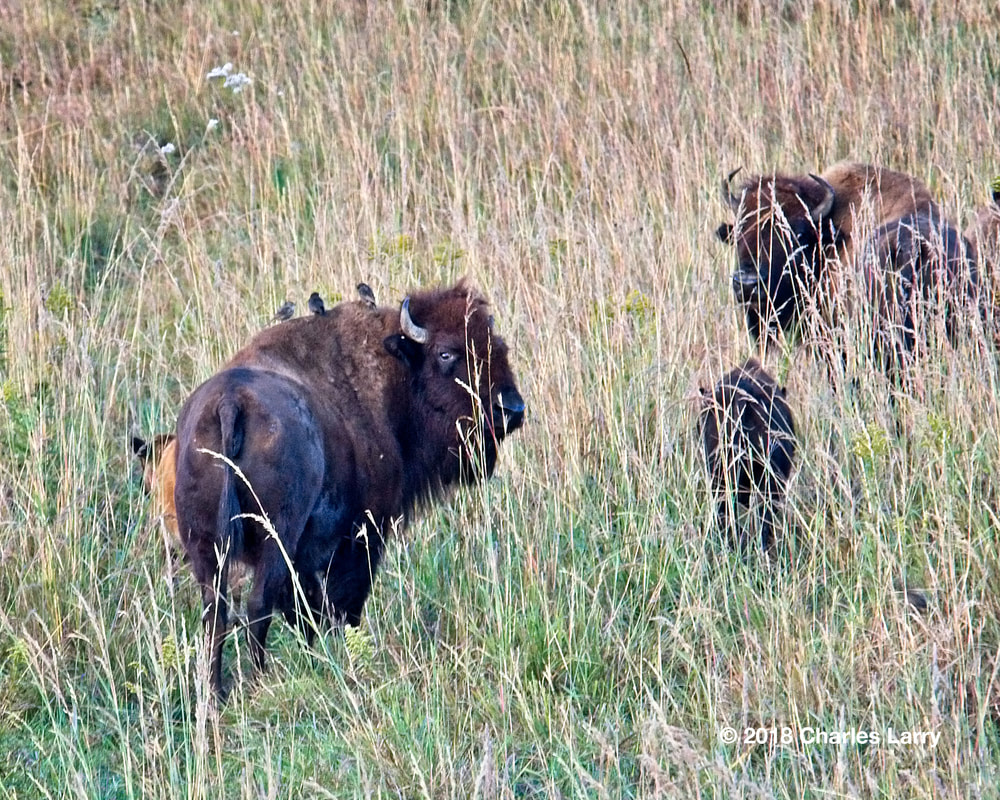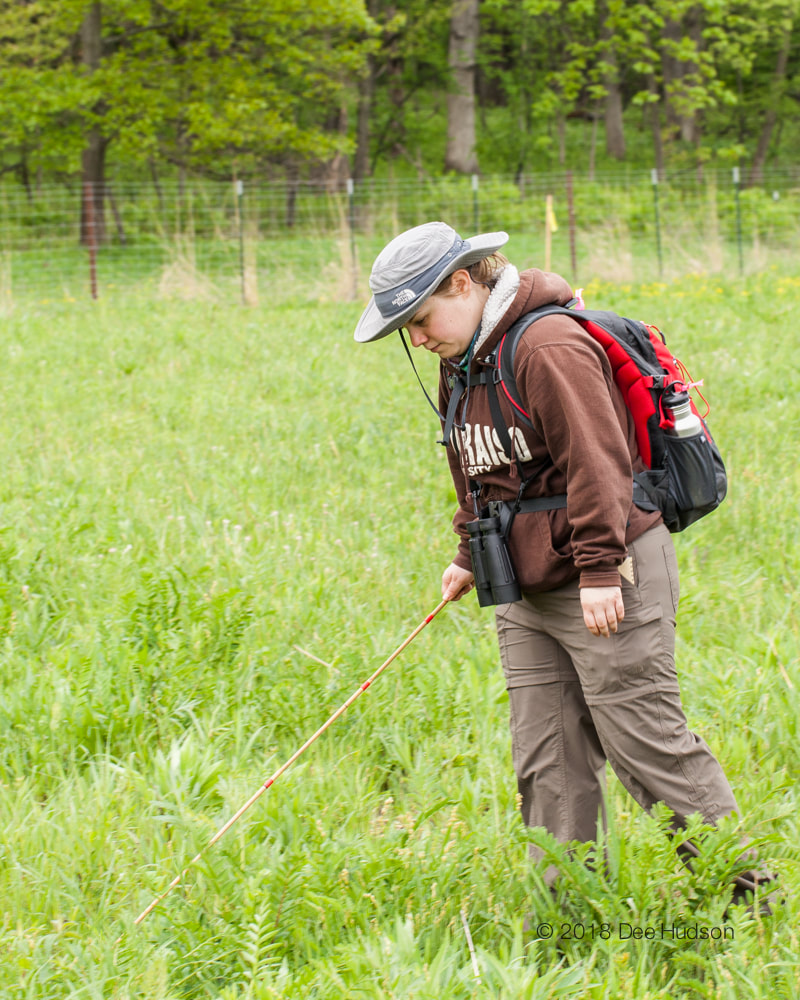|
By Heather Herakovich, MS Birds are known harbingers of spring. Although most stick around during the brutally cold Illinois winter, we don’t take much notice until they are everywhere in our yard, waking us up in the morning and pooping on our cars: spring time! It’s finally springtime, and at Nachusa the birds are singing, vying for territory, and finding mates. These aren’t your typical backyard birds like the American robin and northern cardinal, who are your usual early morning alarm and repeating snooze. Nachusa holds a wide variety of bird species, including some of the ones in the most need of conservation: grassland birds. They come with funny names like bobolink and dickcissel, and in all shades of brown and yellow and sometimes black. Grassland (prairie) birds are declining at a faster rate than most bird species, and a majority of this has been caused by habitat loss. Illinois is the prairie state, but only one hundredth of its original prairie remains. Places like Nachusa are doing their best to restore the agriculture fields and recreate the best prairie as humanly possible. Doing this requires a lot of hard work, hours of picking seed, planting seed, removing unwanted plants, burning portions of the prairie and mowing. The birds seem to be responding to this management fairly well. However, there is an elephant in the room, or shall I say a bison in the prairie. American bison are our national mammal, and rightfully so. These large herbivores used to roam most of the contiguous United States, until they were hunted to near extinction. I’m sure you’ve heard the story. But now they’re back! Grazing is a crucial disturbance in prairie habitat, providing habitat for a lot of species and open space for a lot of plants. But how will birds respond to this large, iconic grazer on its new home in Franklin Grove, Illinois? When I started my graduate degree at Northern Illinois University in 2013, I was able to start trying to answer that question more specifically by looking at how their nests were going to be impacted by bison. Bison can impact bird nests in a variety of ways. There are the obvious negative direct ones like trampling and dislodgement, but there are also some not-so-obvious impacts. These impacts can be either positive or negative and can affect the nesting habitat, nesting material, clutch size, and ultimately the survival of the chicks until they leave the nest (nest success). Seeing if bison are impacting nest success means I must find the nests first. This is the most difficult part. They are roughly the size of a compact disc, made from the vegetation they are in, and wickedly hard to find. If you come by Nachusa early in the morning this summer, I’m sure you’ll see me walking in the prairie, waving around a stick, and waiting “patiently” for a bird to fly from the vegetation. Although difficult, watching these nests through time is a very rewarding experience. I’ve seen nests being built, eggs being laid, chicks hatching, and chicks leaving the nest. Please don’t try this at home, though. Nests are sensitive to human disturbance, and I follow specific protocol to not influence their nest success. Bison don’t seem to be influencing their nest success either, negatively or positively. This is good news. They are one of the main sources of disturbance in the prairie, and it is a relief that they are not trampling nests of birds in decline, at least four years post-reintroduction. Watching these nests is only a part of my graduate research. I am also looking at how bison may influence nest predators, brood parasitism by brown-headed cowbirds, and what bird species are present. So far, I am not seeing anything change enough to be consider a bison impact. Time will tell if there will ever be a noticeable impact of bison on grassland birds. If I were here in ten years, I would try to find out. The beautiful prairie and bison are a great reason to visit Nachusa, but don’t forget about the birds. Sure, they all look similar and are hard to spot, but they are our harbingers of spring and make the prairie sing in the summer. Heather Herakovich is a PhD graduate student at Northern Illinois University. Heather studies grassland bird nest density, nest success, and species composition in restored plots of varying age as well as remnant control prairies. Heather is attempting to quantify the effects of bison reintroduction, prescribed fire, and restoration age on grassland bird populations at Nachusa.
0 Comments
Your comment will be posted after it is approved.
Leave a Reply. |
Blog CoordinatorDee Hudson
I am a nature photographer, a freelance graphic designer, and steward at Nachusa's Thelma Carpenter Prairie. I have taken photos for Nachusa since 2012. EditorJames Higby
I have been a high school French teacher, registered piano technician, and librarian. In retirement I am a volunteer historian at Lee County Historical and Genealogical Society. Categories
All
Archives
January 2024
|
CONNECT WITH US |
|






 RSS Feed
RSS Feed